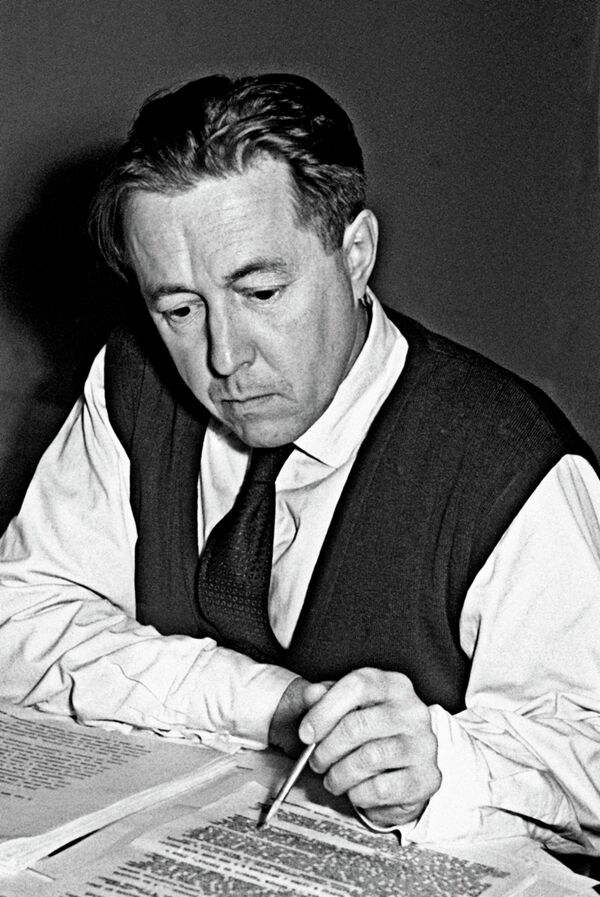March 5 (By Carl Schreck for RIA Novosti) – A small town in Vermont has voted to create a permanent exhibit to its most famous resident, Russian writer and Nobel laureate Alexander Solzhenitsyn, who lived there for 17 years after his expulsion from the Soviet Union.
“We hope to introduce people who may not know much about Mr. Solzhenitsyn to what his works were about, what his philosophy and achievements were, including the very rich history he had of both adversity and productive writing,” Rich Svec, town manager of Cavendish, Vermont, told RIA Novosti on Tuesday.
Residents of Cavendish, which has a population of around 1,400, approved a proposal Monday evening to take over a historic church that will house the exhibit.
Solzhenitsyn, whose book “The Gulag Archipelago” exposed the horrors of Stalin’s prison camps to the outside world, was awarded the Nobel Prize for literature in 1970 and he was expelled from the Soviet Union four years later.
Solzhenitsyn settled into a secluded life in the town in 1977 and left Cavendish in 1994 to return to Russia following the collapse of the Soviet Union. He died outside Moscow in 2008 at the age of 89.
“We would like to have written materials as well as some displays that might include interactive videos,” said Svec, who has served as town manager since 1988. “There are a number of good videos out there that pertain to Mr. Solzhenitsyn’s life, including his time in Vermont.”
The exhibit is the result of a “marriage of two good ideas,” Svec said: the preservation of the church, which was not being used and had fallen into disrepair, and honoring Solzhenitsyn’s life in Cavendish.
The church was built in the 1840s, and its owner, Universalist Unitarian convention of Vermont and Quebec, agreed to place the building in the town’s ownership pending residents’ approval of the plan as long as it would be preserved and “used for good purpose,” Svec told RIA Novosti.
The exhibit, which is expected to open next year, will include oral histories as well as photographs donated by Cavendish residents, Margo Caulfield, head of the local historical society, told Vermont Public Radio (VPR) last week.
Caulfield added that she hopes Solzhenitsyn’s family—which still owns their home in Cavendish—will contribute items as well.
“They certainly have photographs and things that we certainly don’t have that will make this a richer and more meaningful exhibit, and they have been extraordinarily helpful,” she told VPR.
Solzhenitsyn led a famously cloistered life after arriving in Cavendish in 1977. Addressing a town hall meeting that year, the writer told residents that he chose Cavendish because he disliked “large cities with their empty and fussy lives” and enjoyed the “simple way of life and the population here.”
“I like the countryside, and I like the climate with the long winter and the snow which reminds me of Russia,” he said.
He also apologized for the perception that he was trying to isolate himself from the townspeople, saying he was merely trying to avoid the constant interruptions by the press and other individuals he did not know that plagued him during his two years in Switzerland before settling in the United States.
“I have been reading in the newspapers that some people were disturbed or being offended by the fact that I put a fence around my property,” Solzhenitsyn told the town hall meeting. “And I would like to explain why I had to do it. All my life consists of only one thing, and that is work. And the characteristic of my work even does not permit sudden interruptions and pauses.”
Cavendish residents proved to be extremely loyal when media and tourists came looking for the renowned writer, helping Solzhenitsyn guard his cherished seclusion.
“For the first few years there was an onslaught of tourist people coming in asking, ‘Where’s Solzhenitsyn live?’” neighbor Scott Bemis told Public Radio International shortly after the writer’s death in 2008. “And we would just point them in the exact opposite directions, miles and miles away.”
The tourists still come looking for traces of Solzhenitsyn’s life there, Caulfield said, which in part helped convince her of the necessity of an exhibited dedicated to the writer.
"This past summer we had two tourist busloads come through; all Russians, all wanting information," she told VPR.



